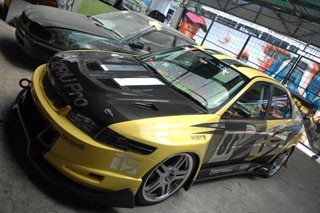
Renault has released pictures and details of the 2011 Kangoo Express Z.E. pure-electric van it showed at this week's International Commercial Vehicles Show in Hanover, Germany. It is the first of several production EVs Renault plans to launch over the next few years and the first all-electric van to be developed and built by a vehicle manufacturer - or so the company claims.
Fitted with a 22 kWh lithium-ion battery, the Kangoo Express Z.E. (Zero Emission) is good for 160 km (99 miles) on a single charge (6 to 8 hours from a standard 220 volt socket). The electric motor produces 44 kw (60 hp) and 226 Nm from idle and top speed is electronically limited to 130 km / h (81 mph).
In Europe, the Kangoo Express Z.E. costs €20,000 (US$26,776), or €15,000 (US$20,082) after the €5,000 (US$6,694) electric vehicle subsidy. This is unavailable in the UK as the Kangoo Express is classed as a light commercial vehicle there.
With the subsidy the price is the same as that for the Kangoo Express diesel. Buyers also have the choice of leasing the van, though prices have not been disclosed.
However, it should be noted that ownership of the vehicle will be separate to that of the battery. According to the French carmaker, customers will be able to purchase, or rent, their Z.E. van and then lease the batteries for €72 (US$96) a month for four years, with a yearly driving limit of 14,490 km (9000 miles).
The cost to fully recharged the batteries (for up to 160km driving range) is believed to be between €1 and €2 (US$1.34 -$2.68) depending on local electricity prices.
The Kangoo Express Z.E. has the same cargo carrying capacity as its ICE siblings and can be pre-ordered today, with first deliveries expected for mid-2011.
By Tristan Hankins
















































































